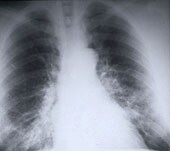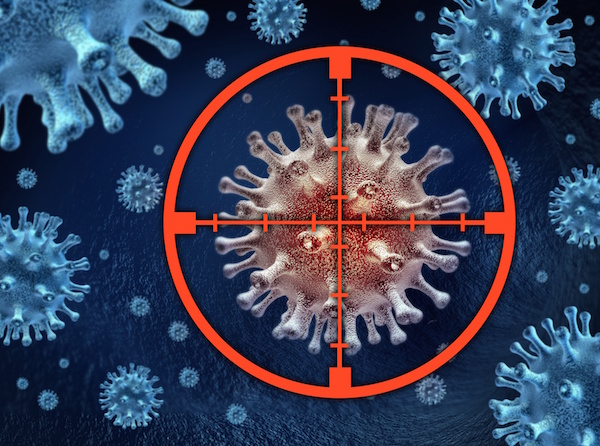
WEDNESDAY, June 29 (HealthDay News) — Routinely screening longtime smokers and former heavy smokers for lung cancer using CT scans can cut the death rate by 20 percent compared to those screened by chest X-ray, according to a major U.S. government study.
The National Lung Screening Trial included more than 53,000 current and former heavy smokers aged 55 to 74 who were randomly chosen to undergo either a “low-dose helical CT” scan or a chest X-ray once a year for three years.
Those results, which showed that those who got the CT scans were 20 percent less likely to die than those who received X-rays alone, were initially published in the journal Radiology in November 2010.
The new study, published online July 29 in the New England Journal of Medicine, offers a fuller analysis of the data from the trial, which was funded by the U.S. National Cancer Institute. Detecting lung tumors earlier offers patients the opportunity for earlier treatment.
The data showed that over the course of three years, about 24 percent of the low-dose helical CT screens were positive, while just under 7 percent of the chest X-rays came back positive, meaning there was a suspicious lesion (tissue abnormality).
Helical CT, also called a “spiral” CT scan, provides a more complete picture of the chest than an X-ray, experts said. While an X-ray is a single image in which anatomical structures overlap one another, a spiral CT takes images of multiple layers of the lungs to create a three-dimensional image.
About 81 percent of the CT scan patients needed follow-up imaging to determine if the suspicious lesion was cancer. But only about 2.2 percent needed a biopsy of the lung tissue, while another 3.3 percent needed a broncoscopy, in which a tube is threaded down into the airway.
“We’re very happy with that. We think that means that most of these positive examinations can be followed up with imaging, not an invasive procedure,” said Dr. Christine D. Berg, study co-investigator and acting deputy director of the division of cancer prevention at the National Cancer Institute.
The vast majority of positive screens were “false positives” — 96.4 percent of the CT scans and 94.5 percent of X-rays. False positive means the screening test spots an abnormality, but it turns out not to be cancerous.
Instead, most of the abnormalities turned out to be lymph nodes or inflamed tissues, such as scarring from prior infections.
During about six years of follow up, there were 247 deaths from lung cancer for every 100,000 person-years in the low-dose CT group and 309 deaths per 100,000 person-years in the X-ray group, a 20 percent difference.
“It is great news. We know that individuals who smoke are at increased risk of lung cancer, but we’ve never had any screening to offer them to catch the disease earlier when it’s more treatable,” said Dr. Therese Bevers, medical director of the Cancer Prevention Center at the M.D. Anderson Cancer Center in Houston. “Now we’re able to offer this high-risk population a screening test that can reduce their chances of dying from this disease.”
Study participants included people who’d smoked at least 30 “pack years” — that means, current or former smokers who’d smoked an average of one pack a day for at least 30 years, or two packs a day for at least 15 years.
The patients in the study who survived lung cancer did so because it was caught early by the screening test, before it had spread elsewhere in the body, and when it could still be surgically removed, Berg said.
CT scans were effective in spotting both adenocarcinomas, which begin in cells that line the lungs, and squamous cell carcinomas, which arise from the thin, flat fish-scale-like cells that line passages of the respiratory tract. CT scans were not as good at the early detection of small cell lung cancer, an aggressive and less common type of lung cancer, Berg said. (X-rays were also less likely to spot this type of cancer.)
Still, questions remain, noted Dr. Harold Sox, a professor emeritus of medicine at Dartmouth Medical School who wrote an accompanying editorial in the journal. According to the National Cancer Institute, spiral CTs cost from $300 to $1,000, which means insurers and policy-makers have to consider who is going to pay for it, and who should receive one.
The trial also found that about 1 percent of people who underwent surgery to remove a cancerous tumor died. Nationwide, that number is closer to 4 percent, Sox said, a rate of post-surgical complications that has the potential to erase some of the life-saving gains from the early detection.
More information
The U.S. National Cancer Institute has more on spiral CT scans.

